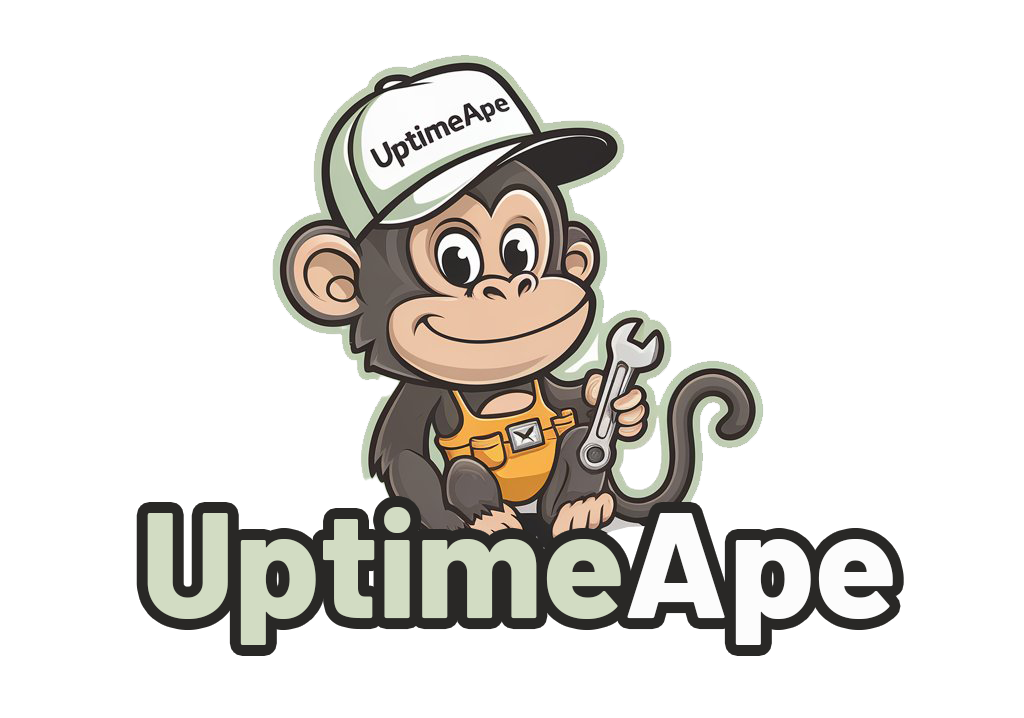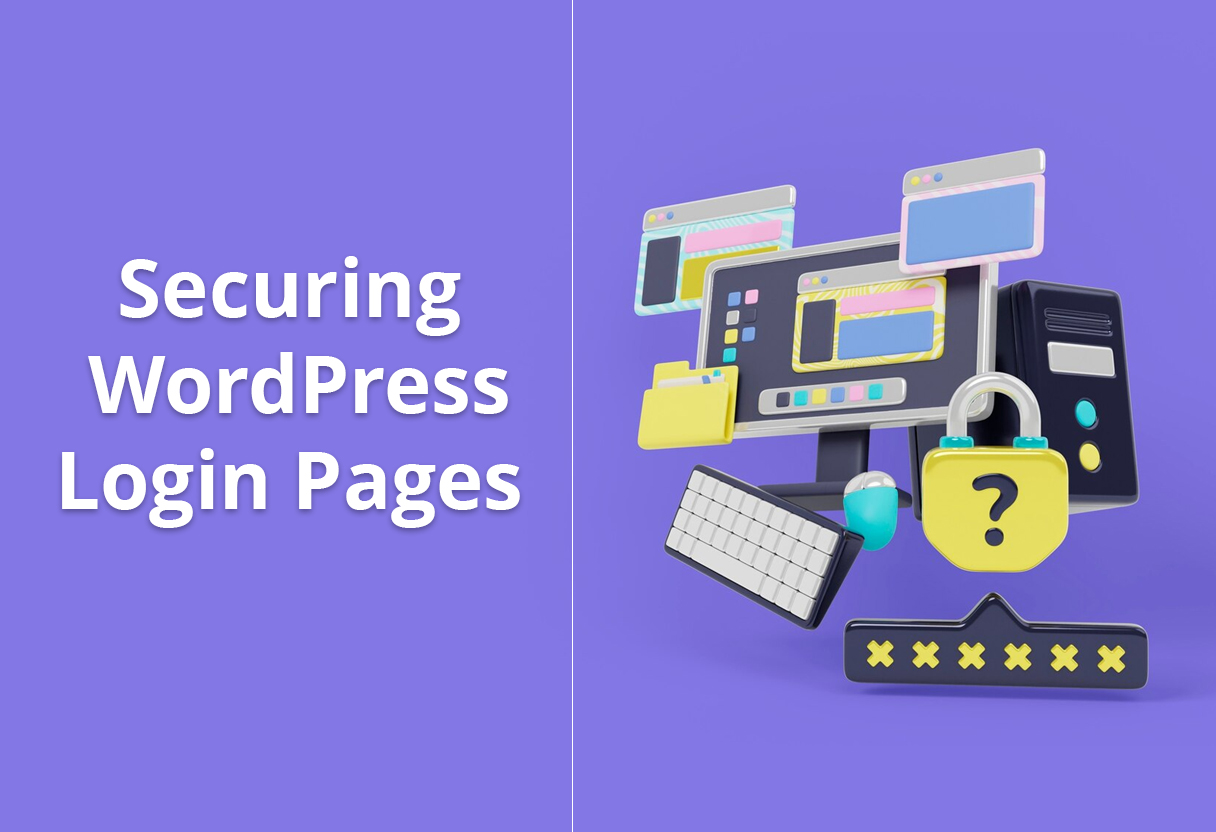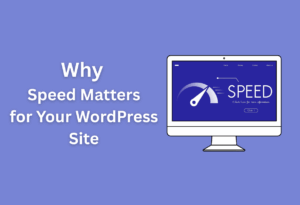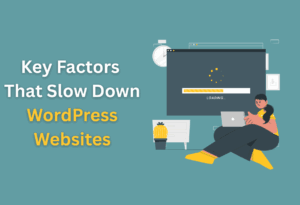WordPress powers over 40% of the internet, making it a prime target for cybercriminals. Failing to secure your login page can lead to unauthorized access and devastating consequences for your website.
In this comprehensive guide, you will learn effective strategies to protect your site from potential breaches and enhance its overall security. From implementing strong passwords to utilizing two-factor authentication, you’ll gain the tools you need to fortify your WordPress login and safeguard your valuable content.
Key Takeaways:
- Utilize strong and unique passwords along with two-factor authentication to enhance the security of your WordPress login.
- Limit login attempts and implement a custom login URL to reduce the risk of brute force attacks.
- Regularly update WordPress core, themes, and plugins to safeguard against vulnerabilities and security breaches.
Types of WordPress Login Security
The various types of WordPress login security measures can help protect your website from unauthorized access. Implementing these strategies ensures a safer environment for your administrators and users. Consider the following:
| Two-Factor Authentication | Adds an extra layer of security. |
| CAPTCHA Integration | Prevents automated attacks. |
| Password Strength Requirements | Ensures secure password creation. |
| Limit Login Attempts | Blocks brute-force attacks. |
| IP Whitelisting | Restricts access to approved users. |
Thou should not underestimate the importance of securing your login page.
Two-Factor Authentication
For enhancing your WordPress security, consider implementing two-factor authentication (2FA). This method requires a secondary verification step, making it significantly harder for unauthorized users to gain access, even if they have your password.
CAPTCHA Integration
To bolster your login security, integrating CAPTCHA can be effective. This additional verification step helps prevent bots from attempting to brute-force your login credentials.
This prevents automated programs from making numerous attempts to break into your site and significantly reduces the risk of compromise, ensuring that only legitimate users can access your login page.
Password Strength Requirements
One of the most effective ways to secure your site is by enforcing password strength requirements. Encouraging the use of strong passwords minimizes the risk of unauthorized access.
CAPTCHA integration enhances your security measures by requiring users to input complex characters rather than easily guessed phrases. It significantly reduces the risk of brute-force attacks and keeps your WordPress site safer for you and your users.
Tips for Enhancing Login Security
You can significantly enhance the security of your WordPress login page by implementing these crucial measures:
- Utilize strong, unique passwords.
- Enable two-factor authentication (2FA).
- Change your login URL.
- Regularly update your themes and plugins.
- Monitor login activities.
Perceiving these practices as part of your security strategy will help safeguard your site against unauthorized access.
Regularly Updating Passwords
On a regular basis, you should change your passwords to maintain an effective security posture. This practice ensures that even if a password is compromised, its usability is limited, thereby enhancing your login security.
Limiting Login Attempts
If you limit login attempts, you significantly reduce the risk of brute force attacks on your WordPress site. This feature will temporarily lock out users who exceed the allowed number of login attempts, protecting your account from unauthorized access.
The implementation of a login attempt limit can be achieved through various plugins or settings within your security framework. By doing this, you’ll deter unauthorized users from guessing your password through repeated attempts, thereby reinforcing your site’s security as well as maintaining a clean and manageable environment for legitimate users. Additionally, combining login attempt limits with other security measures, such as two-factor authentication, can significantly enhance your protection against unauthorized access. Employing brute force attack prevention methods, such as IP blocking after a certain number of failed attempts, further reduces the risk of password compromise. Ultimately, a comprehensive security strategy not only safeguards your site but also promotes user confidence in the safety of their personal information.
Using Security Plugins
The integration of security plugins is a highly effective way to bolster your WordPress login security. These plugins can provide features like firewall protection, malware scanning, and the ability to monitor login attempts.
Tips to choose the right security plugins include ensuring they offer features such as firewall protection, two-factor authentication, and activity monitoring. Opt for plugins with regularly updated databases and strong reviews, as these can drastically improve your site’s overall security posture. Implementing these tools will safeguard your site from various vulnerabilities and emerging threats.
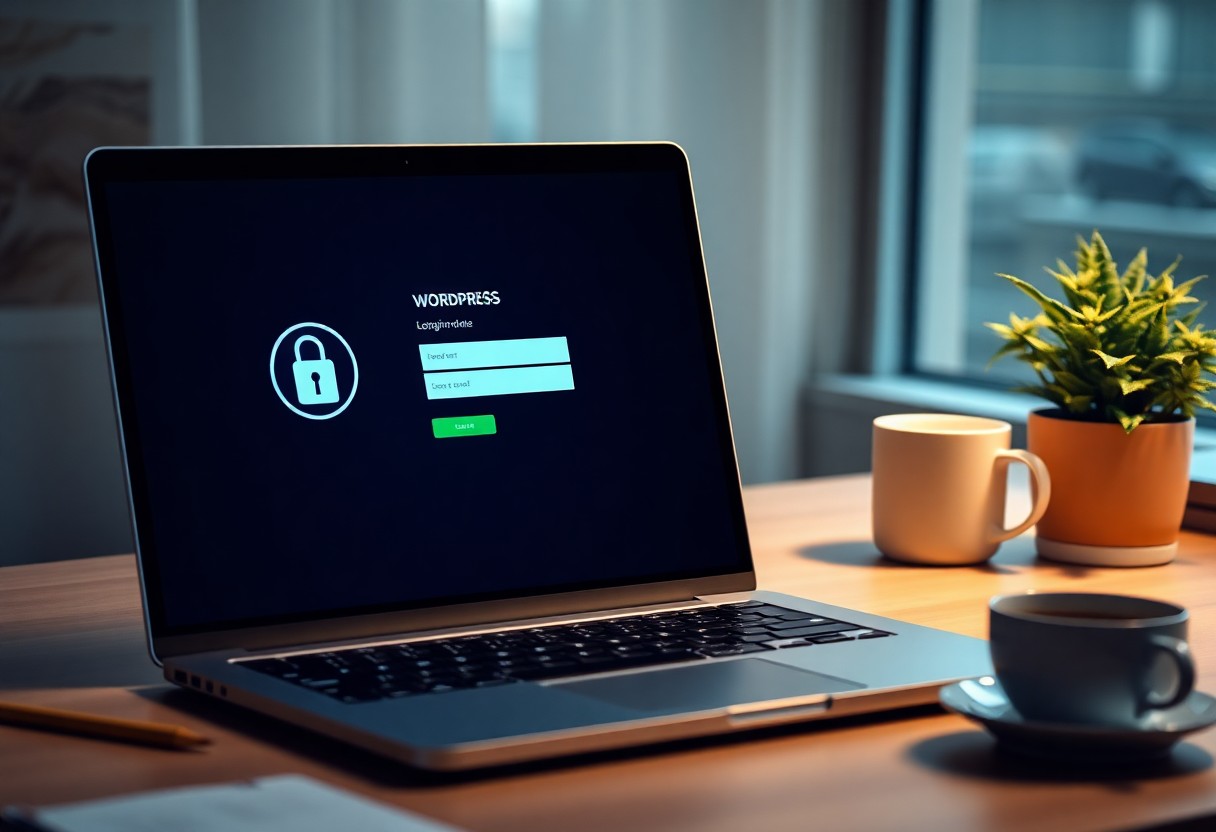
Step-by-Step Guide to Securing Login Pages
All WordPress users should prioritize securing their login pages to protect against unauthorized access. Follow this step-by-step guide to enhance your website’s security:
| Step | Description |
| 1. Enable Two-Factor Authentication | Add an extra layer by requiring a second form of identification. |
| 2. Implement CAPTCHA | Prevent automated login attempts by including CAPTCHA. |
| 3. Configure Security Plugins | Use dedicated plugins to manage your security settings. |
Setting Up Two-Factor Authentication
With two-factor authentication (2FA), you drastically increase your site’s security. This method requires users to verify their identity through a code sent to their mobile device or email after entering their password.
Implementing 2FA ensures that even if your password is compromised, your account remains protected, maintaining the integrity of your site.
Implementing CAPTCHA
TwoFactor mechanisms like CAPTCHA are imperative for preventing automated attacks on your login page. By requiring users to complete a simple challenge, you effectively deter bots from brute-forcing their way into your account. This non-intrusive solution enhances your site’s resilience against persistent threats.
Securing your login page with CAPTCHA can significantly reduce the risk of brute-force attacks. When users enter a distorted text or selection challenge, it helps confirm their legitimacy. Opt for user-friendly CAPTCHA options to ensure that genuine users can log in easily, while discouraging malicious attempts.
Configuring Security Plugins
Configuring security plugins is imperative for tightening your WordPress login page’s defenses. These tools offer features like login attempt limits, IP blocking, and monitoring, ensuring that you can respond swiftly to threats.
Understanding how to implement and regularly update your security plugins is vital for maintaining a robust defense. These plugins provide imperative features such as firewalls and real-time malware scanning, which help identify vulnerabilities. By keeping these plugins updated and configured correctly, you reinforce your site’s defenses against potential security breaches.
Factors to Consider in Login Security
Keep in mind that securing your WordPress login pages involves various factors. Take a moment to evaluate these key elements:
- User roles and permissions
- Hosting environment
- Regular security audits
Recognizing these considerations will help you protect your site more effectively.
User Roles and Access Levels
Now that you understand the importance of login security, it’s vital to manage user roles and access levels carefully. Assign permissions based on necessity, ensuring that each user has only the access needed to perform their tasks.
Hosting Environment
An important aspect of your overall security is selecting the right hosting environment. A reliable host will offer enhanced security features, including firewalls, DDoS protection, and regular updates. Your choice significantly influences your site’s resilience against threats.
It’s important to select a hosting provider that prioritizes strong security measures. Look for features like SSL certificates, daily backups, and proactive monitoring for malware and other vulnerabilities. This extra layer of protection fortifies your WordPress installation, making unauthorized access much more difficult.
Regular Security Audits
If you want to maintain a secure environment, conducting regular security audits is important. Regularly assess your site’s security posture to identify vulnerabilities and areas for improvement that can bolster your defenses.
With consistent security audits, you can spot potential weaknesses before they become critical issues. These evaluations should include checking for out-of-date plugins, weaknesses in passwords, and compliance with security protocols. By remaining vigilant, you significantly reduce the chances of successful attacks on your site.
Pros and Cons of Various Security Measures
Many security measures can enhance your WordPress login page, but each comes with its own set of advantages and drawbacks. Evaluating these factors will help you make informed decisions for your site’s security. Below is a breakdown of the pros and cons:
| Security Measure | Pros | Cons |
|---|---|---|
| Two-Factor Authentication | Added layer of security. | Can be inconvenient for users. |
| CAPTCHA | Stops automated bots. | May frustrate genuine users. |
| Security Plugins | Easy installation and configuration. | Potentially slow down your site. |
| IP Blacklisting | Blocks suspicious visitors. | May block legitimate users by mistake. |
| Login Limit Attempts | Deters brute force attacks. | Can lock out genuine users. |
| Change Admin Username | Makes it harder for attackers. | Can be hard to remember. |
| SSL Certificates | Encrypts data during transfer. | Costs money for implementation. |
| Regular Updates | Fix known vulnerabilities. | Requires ongoing effort. |
| Strong Passwords | Significantly increases security. | Hard to remember. |
| Monitoring and Auditing | Tracks unusual activity. | Can be resource-intensive. |
Benefits of Two-Factor Authentication
While implementing two-factor authentication (2FA) significantly enhances your login security, it adds an extra verification step. This not only helps you validate your identity using something you know (like a password) and something you have (like a smartphone), but it also reduces the chances of unauthorized access to your site.
Drawbacks of Using CAPTCHA
Even though CAPTCHAs help in preventing automated bot attacks, they can sometimes hinder the user experience. Users may find them annoying, especially if they have to solve multiple CAPTCHAs after several unsuccessful login attempts, which could lead to frustration and potential abandonment of your site.
This annoyance can deter potential customers and users who require a seamless experience. Additionally, some CAPTCHAs may be challenging for visually impaired individuals or users with disabilities, which could alienate a section of your audience.
Impact of Security Plugins on Performance
While security plugins provide an imperative barrier against various threats, they can also have an impact on your site’s performance. The additional resources required by these plugins can lead to slower load times, which may negatively affect your user experience and SEO rankings.
Performance can often suffer when running multiple security plugins simultaneously, as each one can add its own load to the server. Therefore, it’s advisable to choose carefully and ensure you’re only using the imperative plugins that are optimized for performance while still effectively securing your site.
Best Practices for Ongoing Login Security
Unlike a one-time setup, ensuring ongoing login security involves consistent vigilance and proactive measures. You should implement best practices such as regular audits, user training, and real-time monitoring to continuously strengthen your defenses against potential breaches. This ongoing commitment to security helps you stay ahead of evolving threats while securing your website and its sensitive data.
Educating Users on Security
Security awareness among you and your users is vital. Training them to recognize phishing attempts, use strong passwords, and securely manage their login information reduces the risk of unauthorized access to your WordPress site.
Monitoring for Suspicious Activity
One of the best ways to maintain login security is to actively monitor your website for any suspicious activities. Regularly log security events and analyze them to identify potential issues before they escalate.
It is imperative to establish a system for generating alerts on unusual login attempts, such as repeated failed logins or logins from unfamiliar IP addresses. This proactive approach empowers you to act swiftly and mitigate security threats, ensuring your WordPress site remains protected from potential attacks.
Keeping Software Up to Date
The foundation of WordPress security is keeping your software up to date. Regularly updating your WordPress core, themes, and plugins ensures you benefit from the latest security patches and improvements.
This practice minimizes the risk of exploitation from known vulnerabilities, as outdated software can be a gateway for hackers. By prioritizing updates, you not only enhance your site’s security but also optimize its performance and functionality, creating a safer environment for your users.
Summing up
Conclusively, securing your WordPress login pages is necessary for protecting your website from unauthorized access and potential attacks. By implementing the strategies outlined in this guide, such as using strong passwords, enabling two-factor authentication, and limiting login attempts, you can significantly enhance your site’s security.
Regularly updating your themes and plugins, along with monitoring login activity, will further fortify your defenses. By taking these proactive measures, you ensure a safer environment for you and your visitors, ultimately fostering trust and reliability in your online presence.
